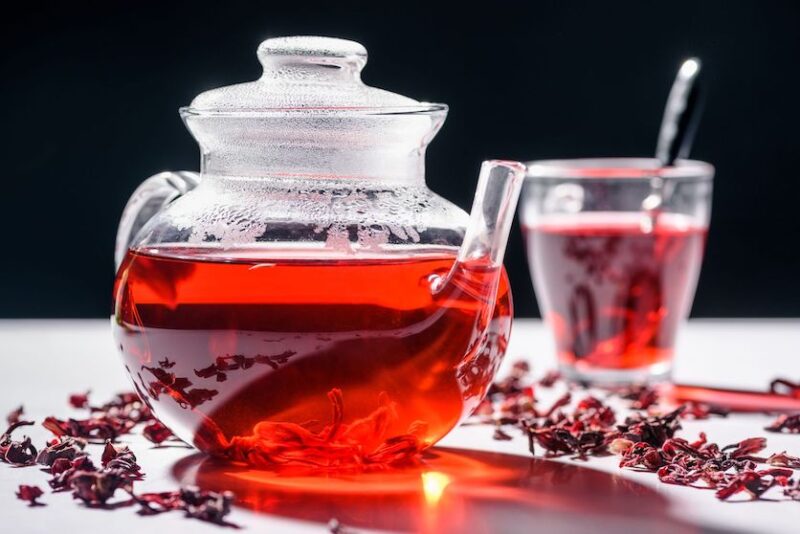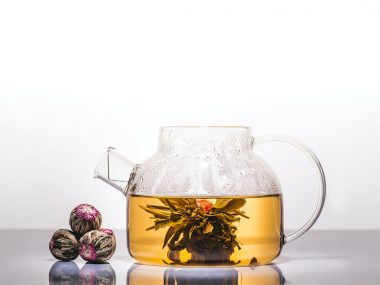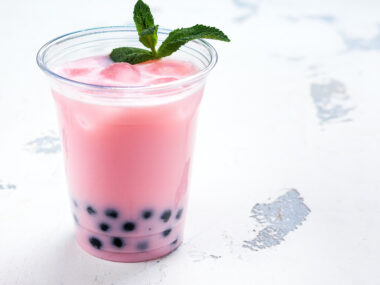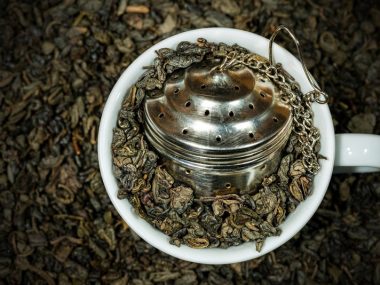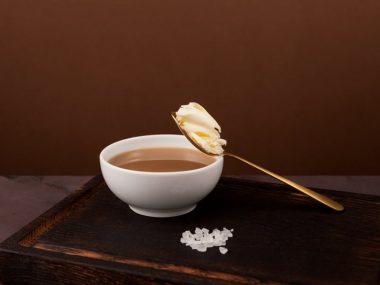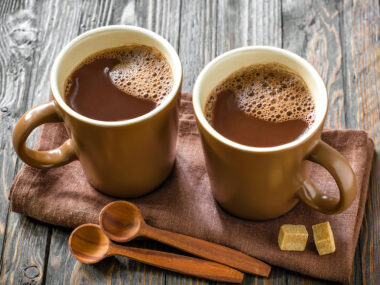Red tea is a broad term to describe a drink that may happen to be red-colored. The one true red tea doesn’t come from a tea plant but a clump of bladed grass. This grassy plant does not grow anywhere else in the world except in one place.
Table of Contents
What is Red Tea?
A tea most often referred to as “red tea” is rooibos. Aspalathus linearis is cultivated and harvested in only one small area of the world to create the red tea we know and love as rooibos. There are other types of tea that are also called “red” because of infusions or blends of herbs that give it a red tint.
Red rooibos tea is an interesting variety because it barely makes it into the tisane (herbal) classification, and it’s not a true tea as black or green. Rooibos plants are only grown in South Africa’s Cederberg Mountains region. Aspalathus linearis (rooibos) means “red bush.” The plant looks similar to a large clump of desert grass.
Cultivation and Harvesting Rooibos
Plantations in and around South Africa’s Cederberg Mountains grow rooibos in conditions that mimic the Mediterranean. After planting seeds, rooibos plants take about 18 months to mature, after which the blades of the plant are harvested in late summer to early autumn. The blades are cut just above the base of the plant and tied into bundles.
Cutting, Sweating, Fermentation
The bundles are carried to a processing location where the blades (leaves) are placed into machines that cut them into smaller pieces. Next, the pieces are left to “sweat.” During the “sweating,” the grass blades turn red because of oxidation. Both the oxidation and red color are what lends to rooibos’ distinctive flavor.
Drying, Sorting, Pasteurization
Once the sweating is completed, the tea is dried in the sun. It then goes on to be sorted according to length. Machines sort out the larger pieces from the smaller ones. The tea must undergo a process to sterilize it from any potential bacteria. Pasteurization is done by steaming the tea. It then rolls out onto beds where hot air dries it.
Grading and Packaging
The now sterile tea goes to a large building where workers hand-sort and grade the tea based on length, color, aroma, and flavor. Each sorted batch goes to be processed as loose-leaf or tea bags and is then off to various exporters.
History Behind Rooibos Red Tea
Over 300 years ago, indigenous Khoisan bush were the first to try brewing rooibos. Tea made from the plant became something they enjoyed because of the aroma and taste.
In the late 1700s, Carl Thunberg (a botanist from Europe) was in the Cederberg Mountain area. He was observing various plants when he saw indigenous people climbing the mountain to pick some plant and make tea from it. His interest in learning more about this tea sparked the introduction of rooibos to the world.
Later on, Dutch settlers of the South African cape area found that rooibos tea was far cheaper to cultivate and harvest than the black tea they were accustomed to. As more and more immigrants and settlers arrived in the area, rooibos caught on and became the quintessential drink for the area.
What Does Red Rooibos Tea Taste Like?
Rooibos tea is well known for its multi-dimensional layer after layer flavors. This tea is experienced on a very personal level, and what one person tastes, another finds a whole different set of flavors.
Expert tea samplers have created a sensory wheel for rooibos because of the extensive descriptors from a 2009 tasting of rooibos. To give you an idea of just how vast the flavor profile goes, the tasters developed 121 different descriptions for the tea’s aroma, taste, and how it felt on the palate.
A few of the characteristics of rooibos they noted were:
- Lower quality rooibos: musty, bitter, grassy
- Good quality rooibos: honey, woody, floral, caramel
Varieties Of Red Tea
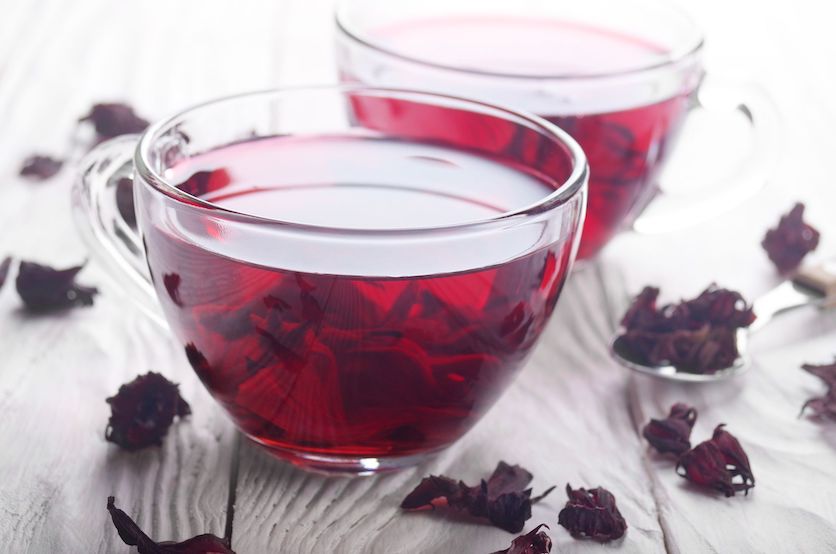
When mentioning “red tea,” some associate the term to define the color of a tea regardless of what type of tea it is, infusions of flowers or herbs are what creates the red color of those teas.
Red Raspberry Leaf Tea
This tea is not red as perceived but a light yellow in its unadulterated form. When other ingredients are blended in, the tea’s color will be darker. Different tea makers add additional ingredients to this tea that may include other herbs, dried fruit, or black/green tea.
Red Raspberry Tea
Compared to red raspberry leaf tea, this tea is red in color because of the dried fruit of raspberries and other herbs and fruits blended in. Tea makers may include hibiscus, rose hips, apples, elderberries, or apples.
Red Rose Tea
“Red Rose Tea” is a brand name tea produced by the Red Rose Company owned by parent company Harris Tea. Red Rose Tea is a blend of black teas sourced from black tea plantations in India, Indonesia, Kenya, and Sri Lanka (Ceylon.)
Red Clover Tea
Red clover tea is a tisane (herbal) made from the leaves and flowers of Trifolium pratense. This herbal tea is often used in traditional medicine. The tea can range in color (amber to reddish amber), and the color depends on whether the flowers are infused or blended in with the tea leaves.
Red Ginseng Tea
Red ginseng tea is also a tisane (herbal) and is made from the ginseng plant (Panax.) The ginseng plant is harvested, dried, and processed into various forms used to make tea that include an extract, crystals, or powder. Typically, red ginseng tea is made with crystals that dissolve in hot water. The color of this tea is not red but somewhat amber.
Hibiscus Tea
Hibiscus tea is a beautifully red-colored tea, but like many other red teas, it too is a tisane (herbal.) This tea is typically made from the leaves, flowers, and calyces of Hibiscus sabdariffa. A cup of this tea looks like cranberry juice. However, it doesn’t taste anything like cranberry but is more floral.
Is There Caffeine In Red Tea?
The tisanes (rooibos, red clover, hibiscus, red ginseng, and raspberry teas) do not contain caffeine because they are not made from the tea plant Camellia sinensis (black and green tea.) Red Rose Tea, however, is a blend of black teas, and it does contain caffeine. Black tea is the highest caffeinated tea and can contain up to 50 mg of caffeine per cup. The recommended daily intake of caffeine by the FDA (Food and Drug Administration) is 400 mg.
What Is The Difference Between Red Tea and Black Tea?
Red tea can differ from black tea because of its name or ingredients. The exception being Red Rose Tea which is a blend of black teas. The only thing that may cause tea drinkers to assume it’s red is its brand name (Red Rose Tea.)
The other red teas we have mentioned are tisanes (herbal teas.) Herbal tea doesn’t have caffeine because it’s not made from the true tea plant (Camellia sinensis.) Black teas are typically enjoyed with meals and throughout the day as a beverage, whereas tisanes are consumed more for therapeutic purposes.
Is Red Tea Better Than Green Tea?
The defining differences between red tea and green tea come down to the caffeine content. However, there are a few other things that may factor in as well as which is better.
Red Tea vs. Green Tea
A study on the differences between teas shows how minerals and tannins vary between red (rooibos) and green tea: red tea is almost 25% higher in minerals than green tea and also has 86% more tannins than green tea. Another study claimed red tea (rooibos) to be lower in tannins. The higher the tannins in a tea, the more astringent the tea will taste, and the higher the antioxidants.
Red tea (rooibos) has significant benefits over green tea:
- Higher in antioxidants
- Higher in minerals
- No caffeine
| Red Tea | Green Tea |
| Caffeine-free | Contains caffeine |
| Tannins: 19.15% | Tannins: 2.65% |
| Antioxidants: higher (19.15%) | Antioxidants: lower (2.65%) |
| Minerals Copper: 0.006 (lower) Manganese: 0.28 (lower) Iron: 0.017 (higher) Zinc: 0.015 (lower) Magnesium: 1.4 (higher) Calcium: 2.18 (higher) Sodium: 0.96 (higher) Potassium: 30.8 (higher) Phosphorous: 3.26 (higher) | Minerals Copper: 0.007 (higher) Manganese: 0.66 (higher) Iron: 0.005 (lower) Zinc: 0.017 (higher) Magnesium: 1.18 (lower) Calcium: 1.02 (lower) |
Is It Okay to Drink Red Tea Every Day?
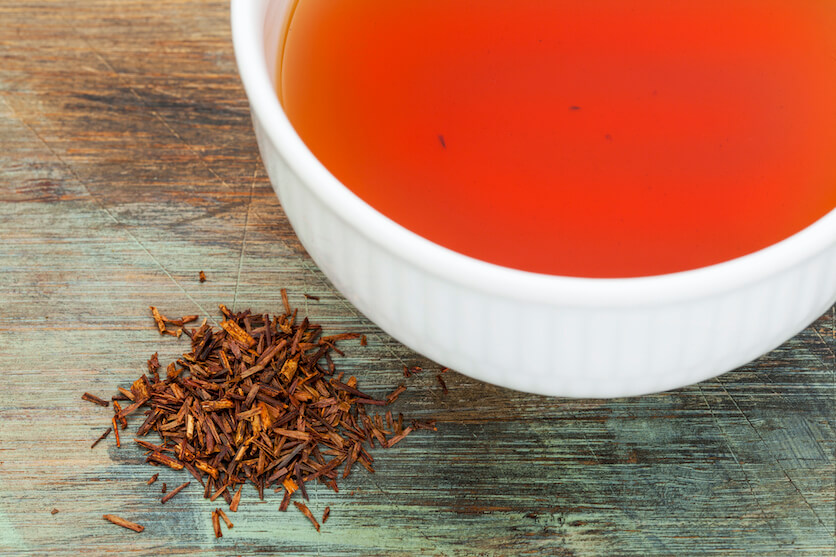
Consuming red tea daily within moderation is said to be reasonably safe. However, according to a recent study, consumption of large amounts or long-term use of red tea (rooibos) can be harmful to your liver. Those with cancers relating to the breast, uterus, ovaries, prostate, testis, or thyroid are cautioned before drinking rooibos.
Additionally, findings indicated drug interactions between rooibos (red tea) and certain drugs such as Carbamazepine, Rifampin, Phenobarbital, Phenytoin, glucocorticoids, Erythromycin, Ketoconazole, Clarithromycin, and Verapamil.
We lack the expertise to recommend or advise on the consumption or use of red tea. We do, however, present reliable sources with directly related information. To drink or not drink red tea comes down to a personal choice.
Red Tea Benefits
What is red tea good for? There are claims and findings from numerous studies on rats that red tea (rooibos) is beneficial as an antioxidant, anti-inflammatory, and antiviral. Benefits in humans confirmed the tea promotes a healthy heart.
Protects Against Neurodegenerative Disease
Our brains are subjected to oxidative stress resulting in damage that leads to diseases such as Alzheimer’s and Parkinson’s. A study was done to find out how antioxidant intake affects the conditions discovered rooibos tea to be highly beneficial. Antioxidants such as flavonoids, aspalathin, and dihydrochalcone glucoside act as protectants for neurons in our brain.
Antiviral
A study was conducted on patients who consumed about six cups of red tea for a week. The tea was brewed for 20 minutes each time. The findings of the study reported that the tea protected patients against herpes simplex and HPV (human papillomavirus)
How To Drink Red Tea
Because we have covered not only rooibos but other red types of teas, we have a few recipes for you to try.
Traditionally Brewed Rooibos Red Tea
This unadulterated form of rooibos tea is the best way to experience the layers of flavor we discussed earlier. Explore what you taste as you take that first sip.
Ingredients
- 2 cups of water
- 1 teaspoon of loose rooibos tea
Directions
- Bring the water to a boil.
- Remove from the heat.
- Add the loose leaf tea to an infuser and drop it into a teacup.
- Pour the water into the teacup and allow it to steep for 5 minutes.
- Remove the infuser.
- Enjoy!
Tip: This pairs perfectly with a luscious chocolate eclair or brownie!
Strawberry-Infused Rooibos Iced Tea
We have a lovely tea to enjoy in the summer. Everything wonderful in rooibos and fresh strawberries is bundled together in the iced tea.
Ingredients
- 6 cups of water
- Ice
- 1 cup of freshly pureed strawberries
- 6 teaspoons of loose rooibos tea
Directions
- Bring the water to a boil.
- Remove from the heat.
- Place the loose leaf tea in an infuser and drop it into the pan of hot water.
- Allow to steep until cool or at room temperature.
- Thoroughly wash the strawberries and mash by hand or with a food processor.
- Pour the strawberry puree into a large pitcher.
- Pour the brewed rooibos tea into the pitcher.
- Add ice.
- Pour into glasses and enjoy!
Tip: Add a dollop of whipped cream on the top of your ice tea for an extra added sweetness.
Don’t Dread The “Red” Because It’s Good!
Red tea is a lovely tea to enjoy whether you fancy rooibos, raspberry, or hibiscus. These teas are perfect for tea parties, entertaining, or to enjoy as you lounge in the sun. Remember, moderation is key with rooibos.
